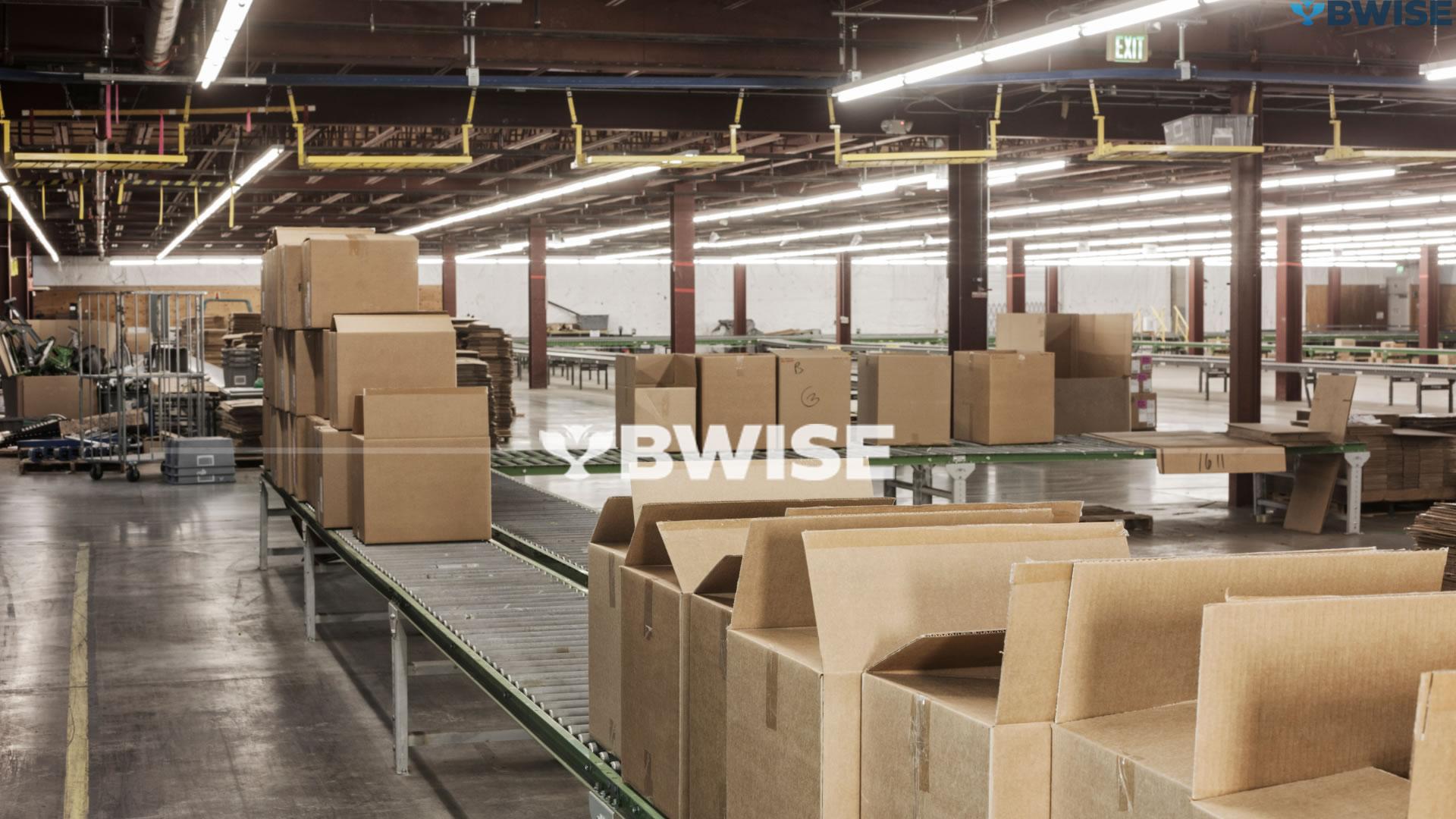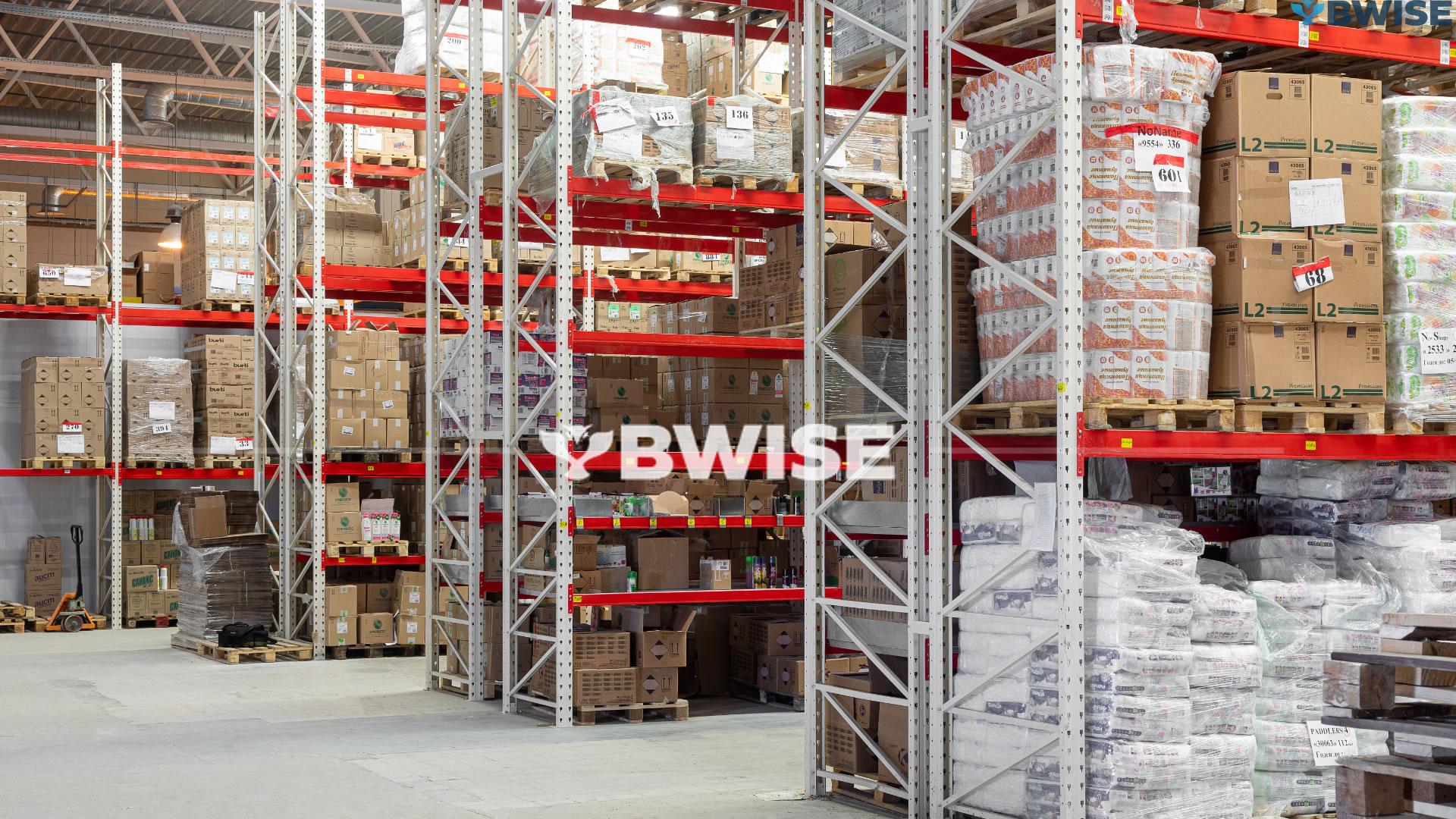In our modern, quick-moving commerce environment, a smooth supply chain is vital. The heart of it all? Warehouse operations. They manage inventory, distribution, and beyond. A Warehouse Management System (WMS) could turn your warehouse and supply chain situation around.
A solid WMS increases your tracking abilities and stock control. It speeds up warehouse duties, making distribution more efficient. Possessing a robust WMS provides improved command over your supply chain. This allows smart decision-making, reducing costs, and enhancing customer service.

Key Takeaways
- Streamline inventory tracking and stock control with a WMS
- Maximize warehouse automation and efficiency for improved operations
- Enhance distribution logistics and optimize order fulfillment
- Integrate WMS with your business for seamless supply chain optimization
- Stay ahead of industry trends and innovations in warehousing management
Understanding the Power of Warehousing Management System
Businesses, big and small, find immense value in warehouse management systems (WMS). Their role is transformative, impacting how firms handle their supply chains. With WMS, you can easily keep track of inventory, manage stock levels, and automate warehouse tasks! This leads to slick, streamlined operations.
What is a Warehousing Management System?
A warehouse management system is a program handling warehouse or distribution center procedures. Offering live updates on inventory, it manages stock automatically and aids in intelligent warehouse choices.
Key Features and Benefits of WMS
- Accurate inventory tracking: WMS uses barcode scanning and RFID for up-to-date stock info.
- Automated stock control: WMS handles reordering and replenishment, keeping inventory levels right.
- Optimized warehouse layout and workflow: WMS improves storage and streamlines picking and packing.
- Improved distribution and order fulfillment: WMS works with shipping systems for quicker, more accurate orders.
- Enhanced data analytics and reporting: WMS offers detailed data for better decision-making.
Using a warehousing management system can change a business’s supply chain. It can cut costs and improve customer service.
Streamlining Inventory Tracking and Stock Control
Tracking inventory and controlling stock effectively are crucial for a smooth supply chain. A robust Warehousing Management System (WMS) can transform these vital processes. It aids businesses in maintaining the perfect stock level and helps prevent expensive stock shortages.
A WMS swiftly records live data on stock shifts and available quantities. It leverages innovative barcode scanning and automated information capture. This provides a precise, instant snapshot of your warehouse supplies. As a result, you are equipped to make wise choices, avert excess stock, and ensure your shelves overflow with apt items.
A WMS stands for more than just inventory monitoring. It is also a tool for automatic inventory management. By examining the past data and sales patterns, it helps to predict future trends. You get early warnings of item shortages, allowing you to restock beforehand. This technique lowers the chances of running out of stock and optimizes the use of your warehouse.
Your WMS takes care of inventory tracking and stock control, so you can turn your attention to important parts of the supply chain. This could be stuff like warehouse automation or distribution logistics. This way, your business operations become more efficient and profitable.
Maximizing Warehouse Automation and Efficiency
Companies strive for better supply chains. Crucial is an effective warehouse automation plan. A capable warehousing management system (WMS) is the key to your warehouse’s peak function. It boosts productivity, sharpens accuracy, and cuts expenses.
Barcode Scanning and Real-Time Data Capture
Imagine a warehouse. Barcode scanning is key. It is like the warehouse’s heartbeat, pumping data in real-time. Another piece of this puzzle is a WMS – Warehouse Management System. It takes this data, providing quick information about stock, where items are, and past transactions. What is the result? Improved keeping track of inventory, easier receiving and stashing away of items, and orders that hit the mark every time.
Optimized Warehouse Layout and Design
Yet it is not all tech-centered. The warehouse’s layout and design are equally crucial. An organized warehouse reduces unnecessary movement, enhances workflow, and uplifts productivity. Pairing a Warehouse Management System with strategic layout planning leads to improved storage, streamlined picking, and seamless material flow.
With warehouse automation and a WMS in place, companies can significantly boost their efficiency. This can facilitate tremendous enhancements in their supply chain performance.

Enhancing Distribution Logistics and Order Fulfillment
Getting products to customers is all about effective distribution and prompt order filling. These are crucial components of the supply chain. A well-functioning warehouse management system (WMS) boosts these processes. It streamlines how quickly orders are processed, pleasing customers more.
Picking and Packing Process Optimization
A WMS improves the picking and packing processes in warehouses. It utilizes up-to-the-minute data and collaborates with other systems to:
- Improve order picking accuracy, reducing the risk of shipping errors
- Minimize travel time for warehouse workers, increasing productivity
- Optimize packing and labeling processes, ensuring faster order preparation
- Provide detailed tracking and traceability of each order, enhancing order fulfillment visibility
The changes we have made lead to quicker requests, less errors, and more satisfied clients. This is crucial in our modern, rapid distribution era.
Implementing a robust WMS enhances your distribution and order fulfillment. It ramps up efficiency and results in faster customer service. Consequently, you gain devoted customers, improved brand perception, and a fortified supply chain.
Supply Chain Optimization with Warehousing Management System
Companies need a solid plan for supply chain improvement to outstrip the competition. A Warehousing Management System (WMS) is a top-notch ally in this quest. It oversees the entire supply chain seamlessly.
A WMS, when connected with other supply chain utilities, offers companies a transparent look at their stock and transport. This aids in superior decision-making. The outcome? Improved productivity, trimmed expenses, and satisfied consumers.
- It tracks inventory in real-time, making sure products are where they need to be.
- It optimizes warehouse layout and uses automation to speed up tasks like picking and packing.
- It works well with transportation systems, making deliveries smoother.
- It provides insights and analytics, helping make smart decisions and adjust the supply chain as needed.
A Warehousing Management System lets companies streamline and adapt their supply chains. The result? More money in the bank and more satisfied customers.
Integrating Warehousing Management System with Your Business
Choosing a Warehousing Management System (WMS) could dramatically transform your supply chain operations. The trick? Finding the perfect fit that seamlessly integrates with your current procedures.
Choosing the Right WMS Solution
Choosing a WMS? Keep your business’s true needs in mind. Consider the features of various WMS options. Do they align with your objectives, such as monitoring inventory and processing orders? Make sure it is user-friendly and integrates seamlessly with your existing systems.
Implementation and Training Considerations
Setting up a WMS takes a lot of work and an effective strategy. Collaborate with your WMS partner to develop a comprehensive plan. It must address data transitioning, system configuration, and employee education. Ensuring your team’s adept WMS handling is key to reaping its full benefits.
- Get your team involved in the setup to make sure they are on board.
- Give them good training on the WMS so they can use it smoothly.
- Keep an eye on how the WMS is working and make changes as needed.
Choosing and implementing the suitable warehouse management system can enhance your supply chain’s efficiency. It can lead to effective inventory control, boost your goods distribution method, and expand your business.
Warehousing Management System: Future Trends and Innovations
Changes never stop in warehouse management systems (WMS) world. Fresh tech and ideas keep reshaping how companies handle their supply chains. Gazing into the future, we spot a few patterns that will shake up warehouse operations.
In the world of Warehouse Management System (WMS), Artificial Intelligence (AI) and Machine Learning (ML) are game changers. They equip WMS to make clever decisions, based on hard facts and data. They can foretell inventory requirements and handle tasks automatically. Through AI and ML, businesses can operate more smoothly, cut down on errors, and enhance overall warehouse productivity.
The Internet of Things (IoT) is showing up big time. IoT gadgets and detectors update the storage facility’s data handling processes. They follow items and keep an eye on machinery, offering bosses a full picture of their workspace. This assets in smarter decision-making.
Future trends point to increased use of robots, automation, and cloud-stored WMS tech. These developments mean quicker, more accurate, and adaptable warehouses. Happy consumers and a competitive business advantage will follow.
Keeping an eye on fresh trends and advances in WMS is vital for companies to keep up the pace. Embracing these novel technologies helps businesses streamline their supply chains. This paves the way for sustainable achievements.
Looking ahead, the warehouse management systems hold promise. Fresh tech and breakthroughs are poised to transform the field. If companies stay updated and flexible, WMS can help make their operations smoother, keep customers happy, and remain competitive.

Conclusion
An inventory control tool like a Warehousing Management System (WMS) can revolutionize business operations. Supply chains become highly efficient with its help. Not only does a WMS facilitate better inventory monitoring, but it also aids in intelligent decision making for companies.
A WMS? It is a game-changer. Picture this: your inventory, always in check, no more running out of stock. Think about your orders, filled quicker than ever and logistics? A breeze. It is the cherry topped with savings and boosts to your profits.
As logistics and warehousing evolve, the requirement for a WMS escalates. Companies implementing this tech will maintain a lead. Prepared for future hurdles, they will continue to expand, fortifying their supply chain. For more information about BWISE WMS, feel free to schedule a demo. Remember B1 – BWISE!!
